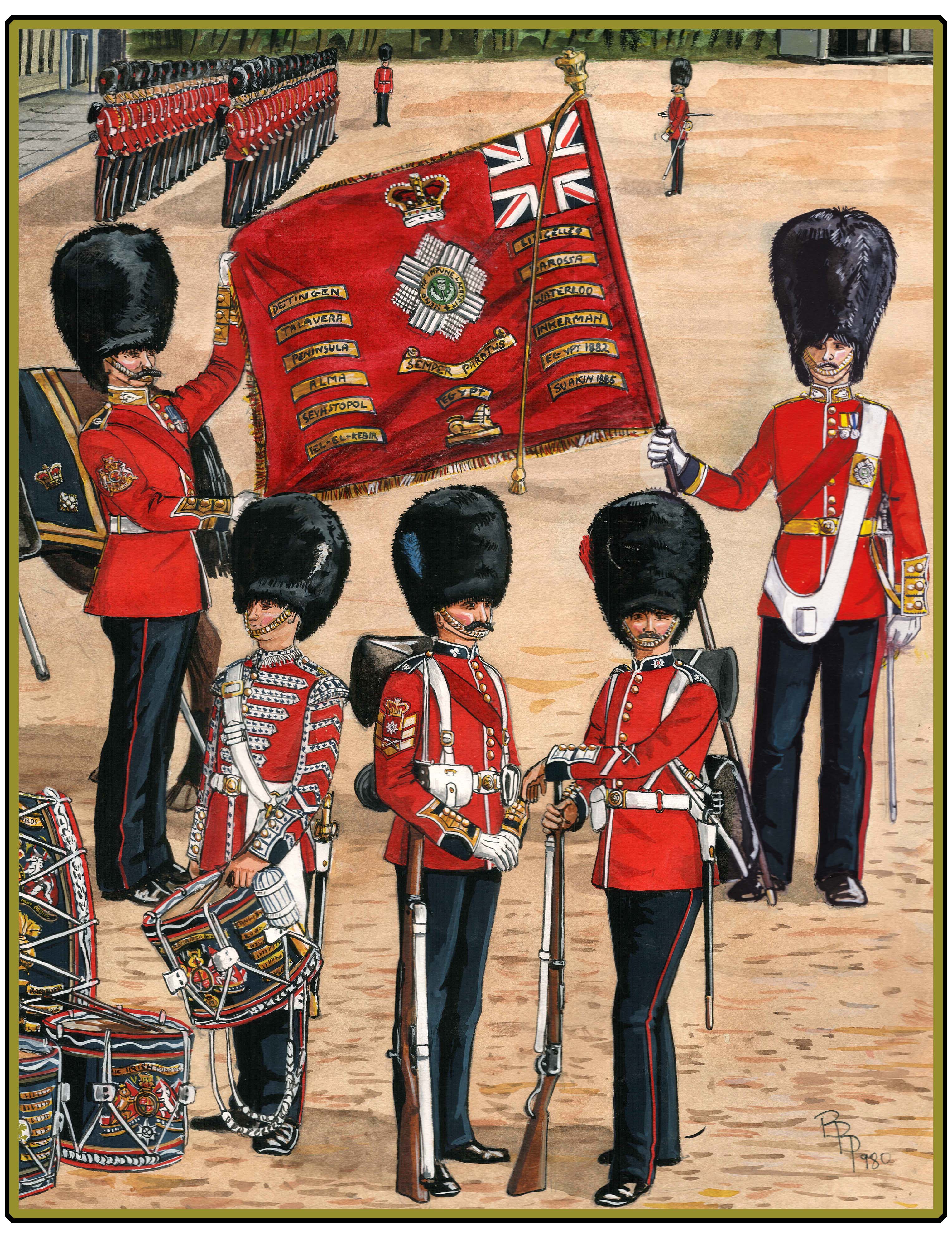Queen Victoria's Armed Forces
1881-1902
THE FOOT GUARDS
UNIFORMS, ARMS & EQUIPMENT
By 1881, the three regiments of Foot Guards were approaching 300 years of service. The Grenadiers were formed in 1656 to protect Charles II in exile in the Netherlands. They were named as his Royal Regiment of Guards and accompanied him on his return to England in his effort to regain the crown after the end of the Civil War and the Parliamentary Protectorate.
Meanwhile, in the North of England, General George Monk, an avid royalist and member of the Sealed Knot, gathered his own regiment, raised in 1650, along with elements of two regiments of the parliamentary army. He then proceeded to march from his headquarters at the village of Coldstream, south towards London. This force was known as “The Lord General’s” Regiment, but soon was known as the Coldstream Regiment. In November 1660 the regiment was ordered to take post after the Royal Guards.
Originating from the Argyll Regiment in 1650, Charles II raised a “Lyffe Guarde” in Scotland which in 1662 became the Scotch Regiment of Foot Guards. In 1678 it was styled His Majesties Foote Guard and Ye Garrison of Edinburgh Castle along with Stirling and Dumbarton Castles.
By 1713, the three regiments were designated as the 1st, 2nd and 3rd Foot Guards.
As such these regiments took part in most of the military campaigns of the 18th Century. The Napoleonic Wars saw all three regiments campaigning in the major battles of the Peninsular War from the passage of the Douro to the siege of Bayonne. They again all served at Quatres Bras and Waterloo in 1815.
In honour of their distinguished actions in defeating Napoleon’s Imperial Guard, They were renamed as the Grenadier Guards and ordered to replace their shakos with bearskin caps. The 2nd Foot was renamed The Coldstream Guards and in 1831, when Grenadier companies were abolished, the took up bearskins as well. At the same time, the Coldstreams wore red feathers in their caps and the grenadiers, white. King William IV gave the 3rd Guards, the title Scots Fusilier Guards.
All three regiments distinguished themselves during the Crimean War (1854-56) taking part in the Battles of the Alma and Inkerman and the siege of Sevastopol. The 2nd Battalion, Scots Guards were sent to Canada in 1861 and remained during the Trent Affair.
After a long period at home the Guards Brigade was dispatched to Egypt in 1882, taking part in the Battle of Tel-El-Kebir and subsequently detatchments took part in the Sudan Campaigns of 1885-8.
The Grenadier Guards returned to the Sudan in 1898 and took part in the battle of Omdurman. More battle honours were gained when the regiments went to South Africa.
Queen Victoria wished to commemorate the courage of Irish troops during the South African War. In accordance, the Irish Guards were formed on 1st April 1900. Their first battle honours would come in the Great War (1914-18)
.


